Abstract
The design of a large-scale research project (The Health and Religion Project) in which church volunteers deliver behavior change programming on major cardiovascular risk factors (smoking, elevated blood pressure, elevated serum cholesterol, excess weight, and physical inactivity) is described. A total of 20 churches (Roman Catholic, Baptist, and Episcopal) were recruited throughout Rhode Island and randomly assigned to five experimental conditions. These conditions were designed to test the necessity of training special task forces to coordinate efforts within each church and to test the relative efficacy of high or low levels of professional (paid staff) involvement. Churches have many characteristics that are compatible with behavior change programming for primary prevention of chronic diseases. However, there have been very few research studies of churches engaging in primary prevention activities. Thus, the first step was to test the churches' receptivity to participation in this type of project. To do this, all churches in Rhode Island were surveyed by mail and phone. Those that met several eligibility criteria were randomly selected for recruitment into the study. The high receptivity of the churches was demonstrated by a response rate of 65 percent (20 of 31). This readiness is bolstered by the fact that all of the 20 churches that originally began the study have remained involved for at least 2 1/2 years.
Full text
PDF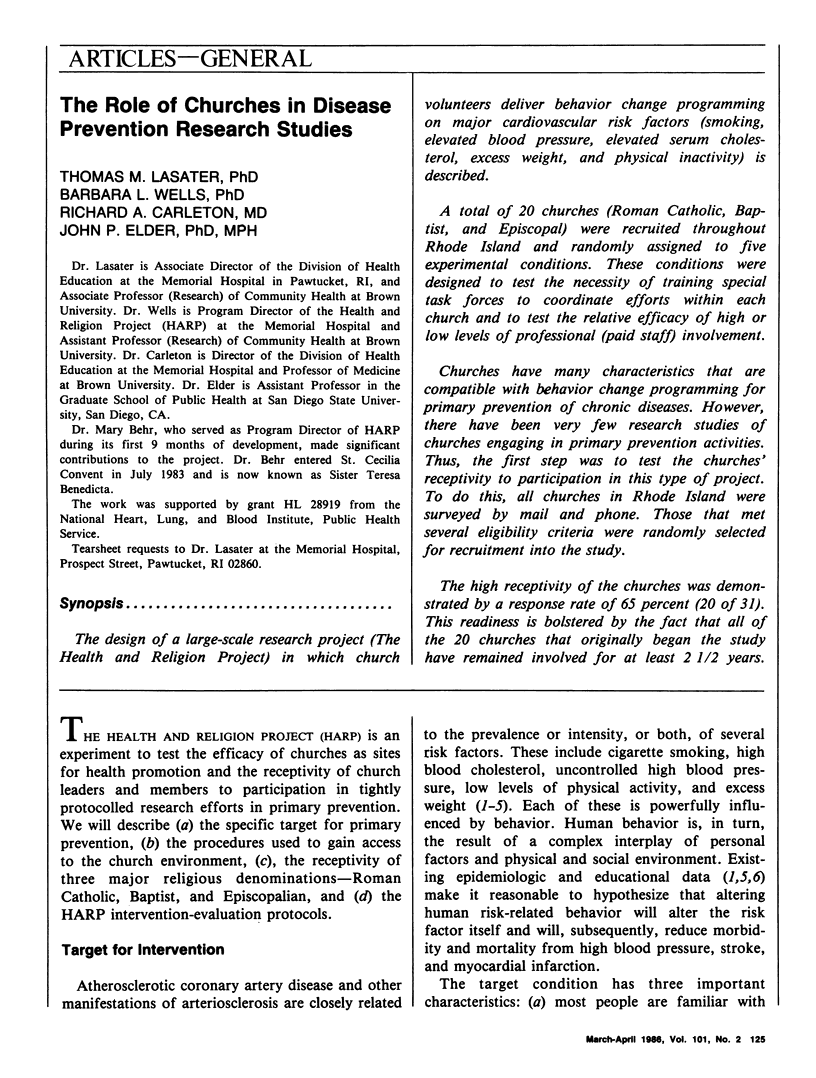
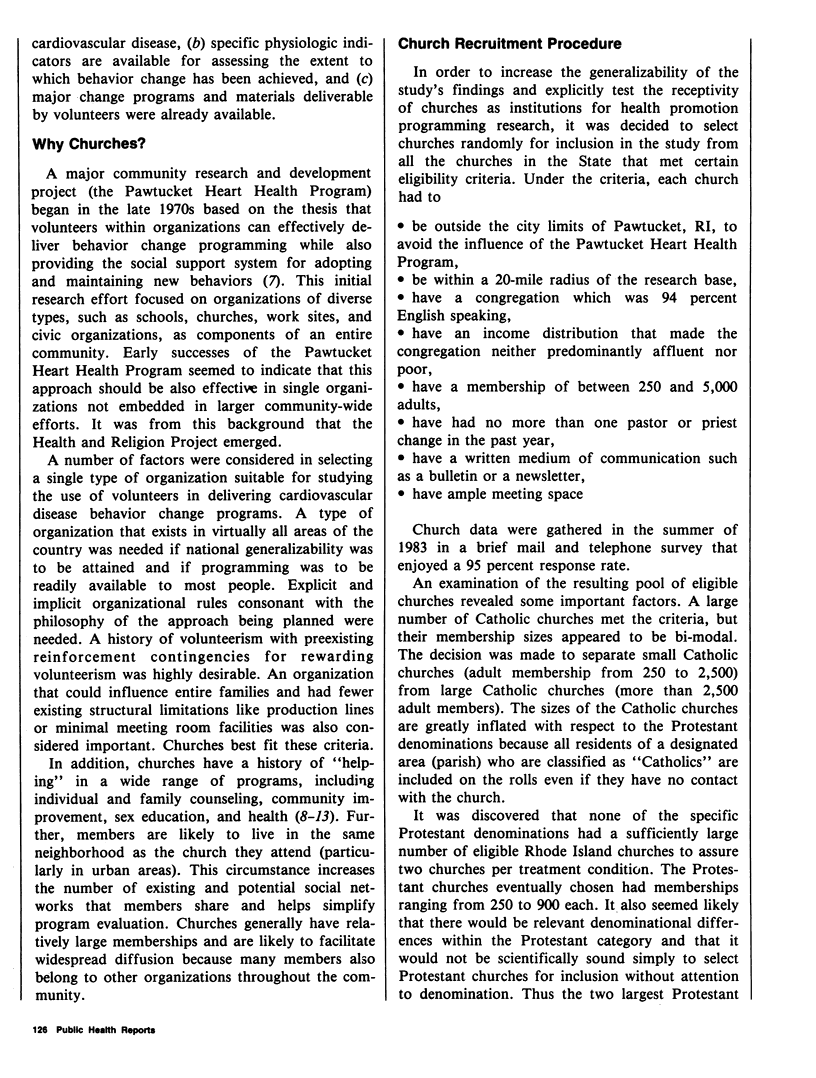
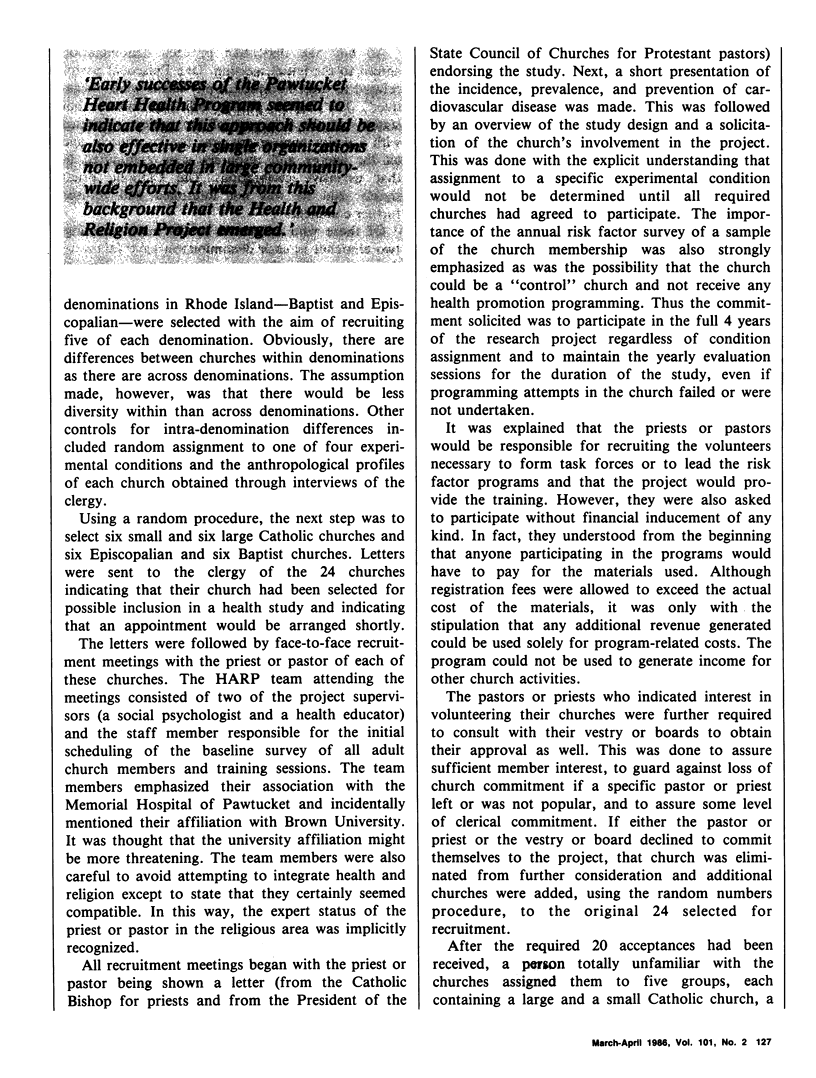
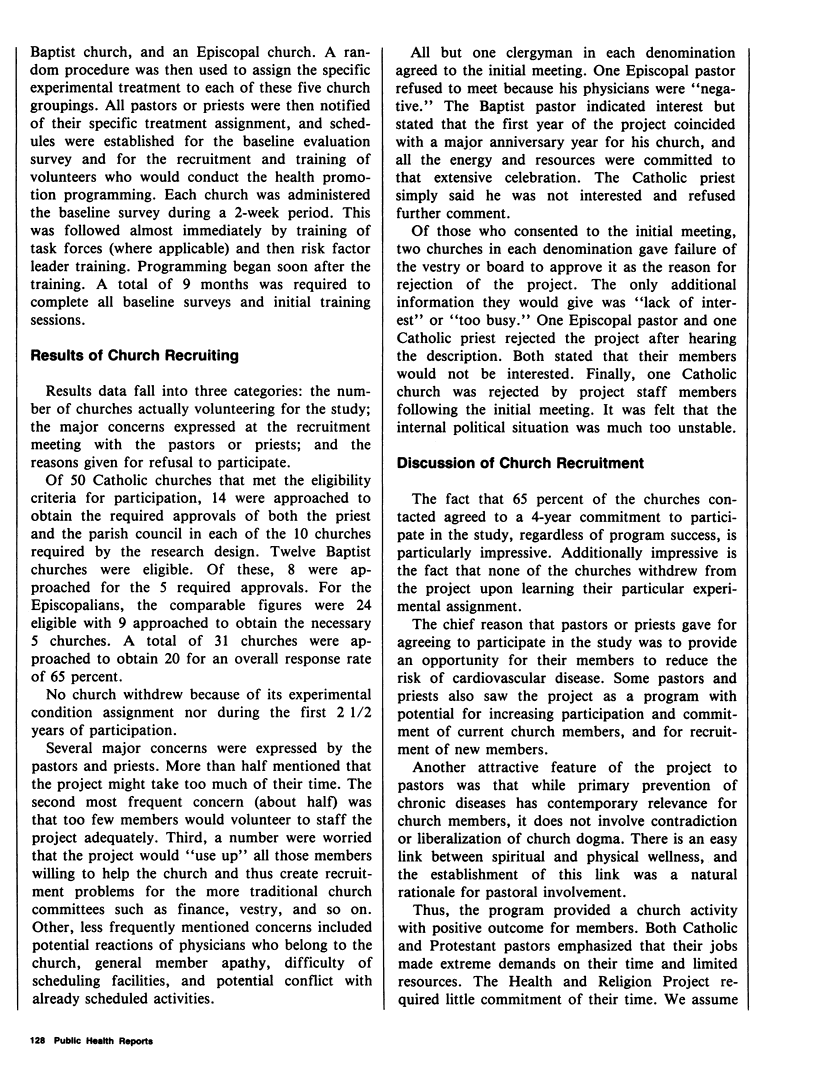
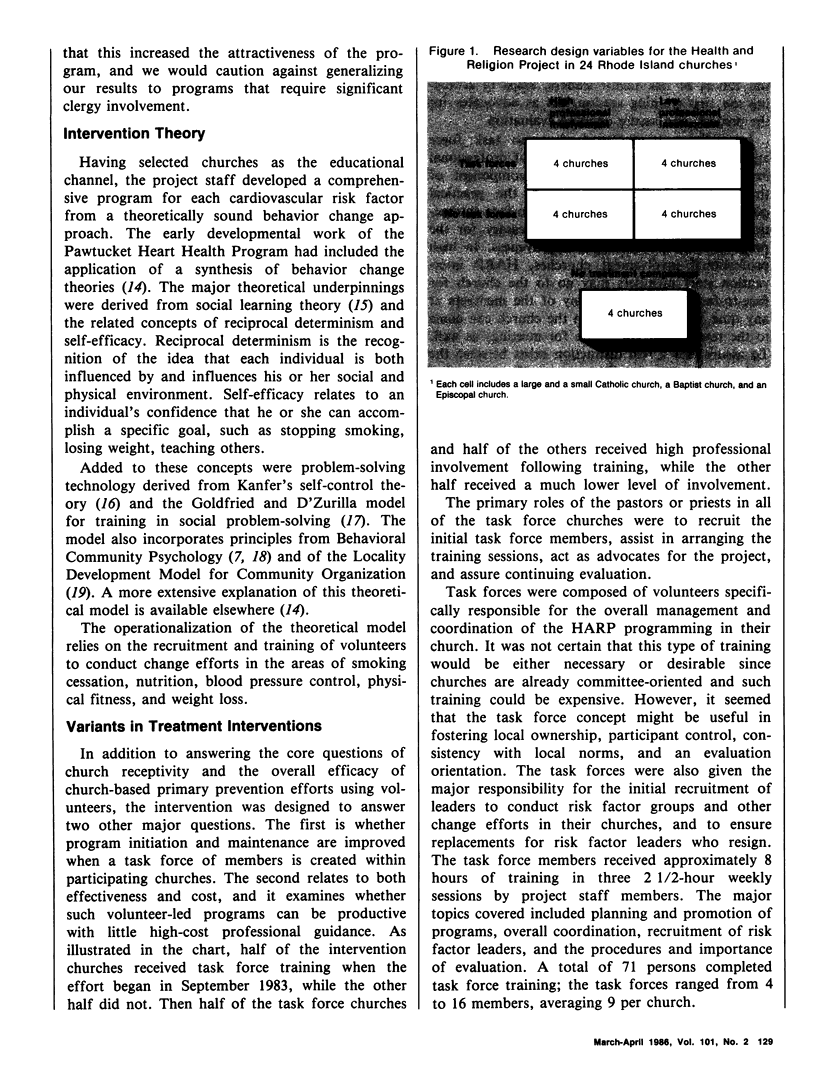
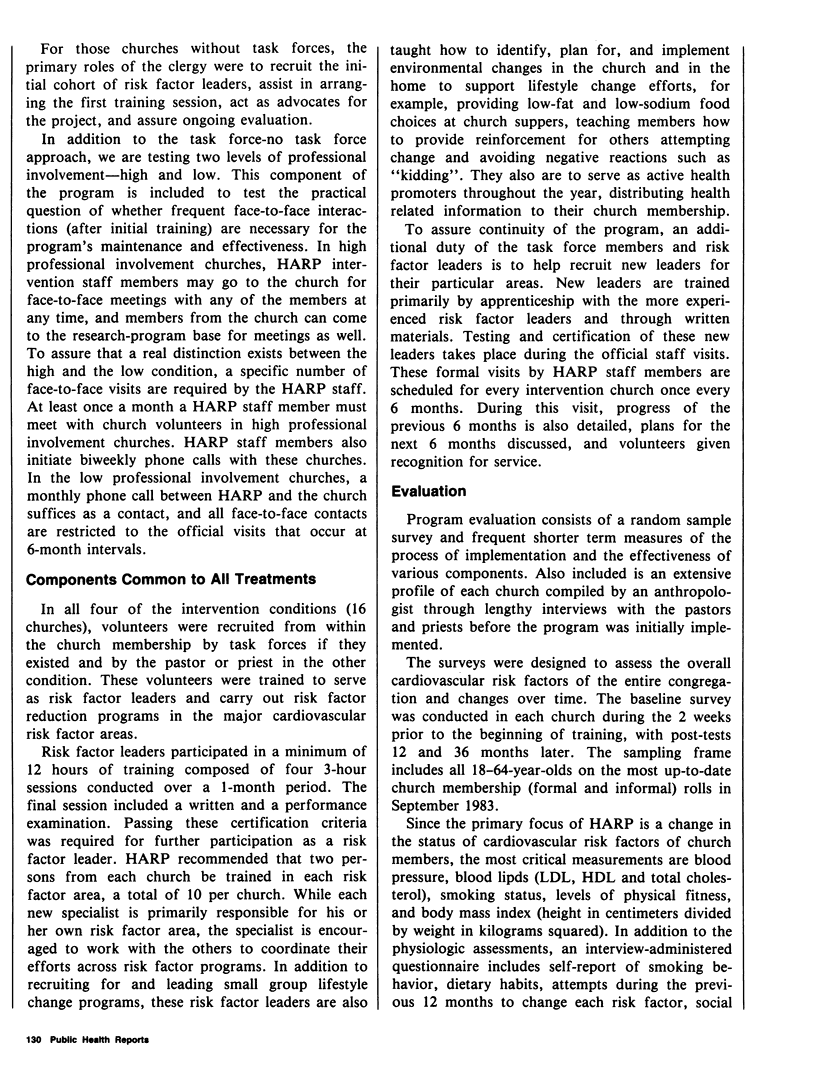
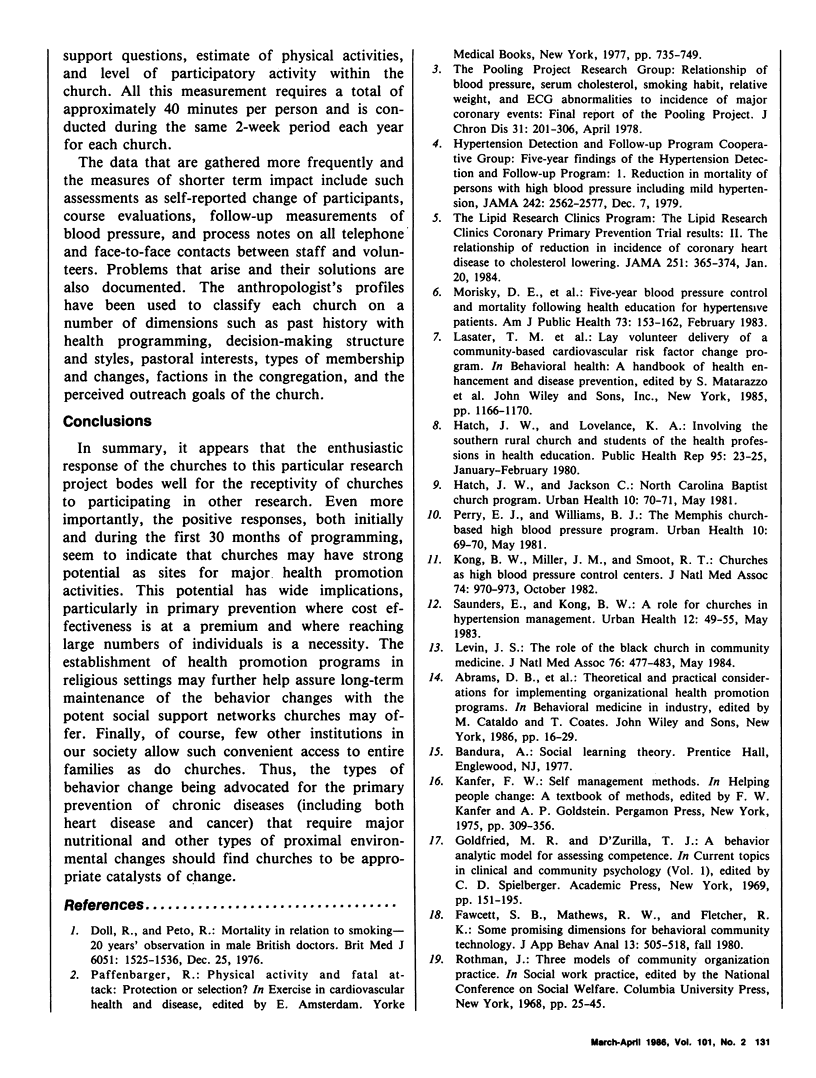
Selected References
These references are in PubMed. This may not be the complete list of references from this article.
- Fawcett S. B., Mathews R. M., Fletcher R. K. Some promising dimensions for behavioral community technology. J Appl Behav Anal. 1980 Fall;13(3):505–518. doi: 10.1901/jaba.1980.13-505. [DOI] [PMC free article] [PubMed] [Google Scholar]
- Hatch J. W., Lovelace K. A. Involving the Southern rural church and students of the health professions in health education. Public Health Rep. 1980 Jan-Feb;95(1):23–25. [PMC free article] [PubMed] [Google Scholar]
- Levin J. S. The role of the black church in community medicine. J Natl Med Assoc. 1984 May;76(5):477–483. [PMC free article] [PubMed] [Google Scholar]
- Morisky D. E., Levine D. M., Green L. W., Shapiro S., Russell R. P., Smith C. R. Five-year blood pressure control and mortality following health education for hypertensive patients. Am J Public Health. 1983 Feb;73(2):153–162. doi: 10.2105/ajph.73.2.153. [DOI] [PMC free article] [PubMed] [Google Scholar]
- Saunders E., Kong B. W. A role for churches in hypertension management. Urban Health. 1983 May;12(5):49-51, 55. [PubMed] [Google Scholar]


